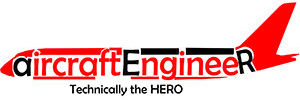There is water contamination in the fuel tank. How would you carry out a water fuel contamination test and what are the other tests you could carryout?
Describe any follow-up actions if contamination is found and continues in the future.
Introduction
Jet fuels can have unwanted water that it collects during airplane operation. This is because the air can be moist or wet and condensation can get into the fuel tanks. It
is necessary to drain the fuel tanks sumps regularly to remove this unwanted water.
Safety precautions
a. Safety Barriers in position
b. MLG Down locks are in
c. Warning notices in flight deck
d. Spark proof lighting
e. Ensure the use of personnel protective equipment (PPE) – Goggles and gloves –spark proof!
f. Fire equipment is on standby
g. Electrically ground the sump drain tool to the airplane structure
h. And correct bonding of aircraft is required to reduce the risk of electrostatic charge build up
i. No use of Portable Electronic Devices risk of Fire, Distraction, and Aircraft System Interference, may occur.
Bonding connections should be made to designated points or to clean unpainted metal surfaces, and should connect
the installation delivering the fuel, with the aircraft or installation receiving the fuel. All connections should be made before to the start of fuelling, and not broken until fuelling is complete and the filler caps
have been replaced where applicable.
Cap 748
Visual Examination and Testing for Contamination
2.1 Fuel should be considered unfit for use in aircraft
if a visual examination shows any of the following:
a) More than a trace of sediment;
b) Globules of water;
c) Cloudiness;
d) A positive reaction to water-finding paste, paper, powder or a chemical detector.
Tools & equipment
Main tank sump drain tool
Paste, Paper, Powder, or detector element
Testing
Sufficient time should be given after landing (45 minutes to one hour) to allow any water to settle and any frozen water droplets to thaw and move to the bottom of the
tank. Use the main tank sump drain tool to extract fuel from the sump drain valve. And ensure that there are no leaks coming from the valve after the drain tool is removed. The fluid will move into two layers if there is fuel in the sample. If the sample stays in one layer it can be all fuel or all water. Visual testing alone is inadequate to determine whether it is pure fuel or pure
water. The presence of free or suspended water is indicated by a distinct change in the color of paste, paper, powder, or detector element that is used to detect water in the sample.
CAP 748
If a fuel sample proves to be unsatisfactory then the sampling procedure should be repeated. If a third sample is necessary and proves to be unsatisfactory, then action should be taken to identify the cause of contamination and no fuel should be dispensed to aircraft from the installation concerned. It would, in this case, be advisable to inform and seek advice from the fuel supplier concerned.
B737-3/4/500 Chapter 12-11-00
A) Drain fuel samples from each sump valve into a transparent container. It is easier to find the water in the fuel if you use food coloring that can make a solution with the water. Put one or two drops of the food coloring into the fuel sample.
B) To remove the maximum quantity of water from the fuel, you must permit sufficient time (approximately 45 minutes). This permits any frozen water droplets to thaw and the water to go to the bottom of the tank. If you drain the sump immediately after the landing, it is possible that some of the water is frozen. This water stays in the tank.
C) Drain the tank sumps sufficiently to make sure you remove water or other contamination from the system.
Remember to start with a section on safety, and the precautions you would take. Mention the applicable local (airport and company), National and International
regulations concerning the storage, handling and disposal of fuel. Keep a theme of safety throughout your essay.
Use the same terminology as used in CAP 748.
